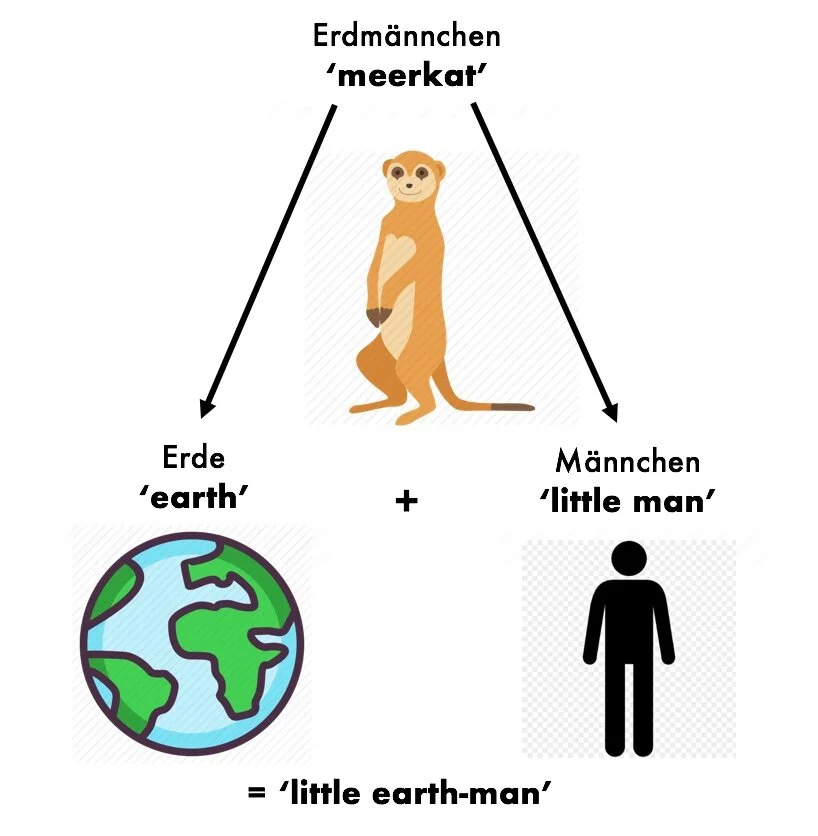Korean Punninsula: Korean-English Wordplay
범어사 Beomeosa Temple in Busan, South Korea. 📸: Lisa Jeon Ox.
Hello, LanGo-nauts!
In today’s post we turn our attention once again to the Korean language (a sort of ‘home language’ for our Institute), and to topics that the LanGo team takes very seriously: humor and wordplay. For lots of examples, check us out on Twitter! We feel that, just as having a tune helps us remember a string of words (how many songs can you recite from memory, and how many poems?), many cases of cross-language homophony and punning have a way of making certain associations unforgettable.
For instance, consider that Korean has by now borrowed thousands of words from English, and as a consequence has developed well-established English-to-Korean sound correspondences. These languages have many sounds in common, but no two languages have exactly the same sets of sounds. The English consonant /p/ tends to show up in Korean loanwords as ᄑ (aspirated /ph/), as one would no doubt expect. But English /f/ (a sound in which the upper teeth make contact with the lower lip, which is rather complex and rare around the world) has no natural Korean counterpart. What to do? Usually the borrowing language just substitutes another sound (or sound sequence), the most appropriate match available. In a few Korean words, English /f/ is represented by a /hw/ cluster: 화이팅 /hwa-i-ting/ (expression of encouragement) from “fighting,” where the narrow passage through the lips achieves a friction effect similar to /f/. But the most common way to render /f/ is again ᄑ (aspirated /ph/), which means that both English “pun” and “fun” become in Korean 펀 peon! What could be more appropriate? Bet you won’t forget, either.
With that in mind, we hope you enjoy our second collection of cross-linguistic wordplay! In many cases we’ll include Romanizations of Korean words and the Chinese characters from which they derive.
[1] This morning I awoke on some 섬 ISLAND.
The Korean word for island, 섬 (seom), is very close in sound to English “some.”
[2] I like SLEEPing in my 잠 jammies.
The Korean noun 잠 (jam) ‘sleep’ calls to mind our word “jammies,” which was one term we used for ‘pyjamas’ when I was little. Note that the Korean word is derived by suffixation of [-m] to the verb root 자- (ja-) ‘to sleep.’
[3] sick day, ill 일 DAY
Sino-Korean 일 (il, 日) means ‘day’ and sounds like English “ill.” The pairing “ill” -- “day” brings to mind our word “sick-day,” referring to time taken off work.
[4] Check's on 책상 the DESK
The word for ‘desk,’ Sino-Korean 책상 (chaek-sang, 冊床), is made up of the words ‘book’ and ‘table, bed.’ The sound approximates English “check’s on,” though with a different final consonant.
[5] You've got TOOTHPASTE on your 치약 cheek!
The Sino-Korean word for toothpaste, 치약 (chi-yak, 齒藥 ‘tooth medicine’), sounds like English “cheek” if you break the vowel into 2 syllables, “chee-yuk.”
[6] To d하다
This is a running-together of English and Korean written forms (rather than a coincidence of sound). The circle shape of the consonant letter <ᄒ h> in 하 will do for the letter <o> in “do,” which is the meaning of 하다 (ha-da). Ta-daah! (For more examples of this kind of graphic word-play, in Korean and other languages, take a look here.)
[7] 의Mea미ning
The Sino-Korean term for ‘meaning’, 의미 (ui-mi), shares the syllable [mi] with its English equivalent. Just add “-ning” to the end of the Korean word, or add [ui-] to the beginning of the English word, and you need never forget this correspondence.
[8] Dog from 일본 loves 독일 bone.
This is a bit of cross-language wordplay on two Korean country names, 일본 (il-bon) ‘Japan’ and 독일 (dog-il) ‘Germany’, which happen to share the syllable 일 (il). The syllable 독 (dok -- ㄱ = g or k, especially when a vowel immediately follows), sounds like English “dog”, while 본 (bon) is not far from “bone”. Dog-il-bon(e)!
[9] Sometimes you’ve gotta 걷다 WALK.
English “got to” sounds a lot like the Korean verb 걷다 (geot-da), meaning ‘to walk,’ especially in fast speech when we say “gotta.”
[10] ROAD길kill
This was one of the first cross-linguistic mnemonics that occurred to me in Korean class at LanGo. 길 (gil) means ‘road’ and sounds like “kill” -- roadkill.
[11] 너의음료su수 bebida
The Spanish and Korean phrases meaning ‘your beverage’ -- su bebida and 너의음료수 (neo-ui-eum-ryo-su)--share the syllable /su/. In Spanish this syllable is the possessive pronoun, and in Korean it’s the head noun ‘water/liquid’ (Chinese 水). If we remember these two phrases together, we can save a syllable’s worth of memory space on our necktop computers!
[12] 요리 YOU’RE EAsy to cook for
This one is a mnemonic for the Sino-Korean term for ‘cooking,’ 요리 (yo-ri, a term shared with Japanese ryōri). The two syllables in Korean sound like the beginning of the English phrase “You're ea(sy ...).”
[13] SALT AND 설탕 sugar
The Sino-Korean term 설탕 (seoul-tang) means ‘sugar,’ but when we say the word aloud we can almost hear the English word “salt”! The fact that these two words refer to white granular substances may be helpful to us in remembering the link in sound.
[14] I never studied a martial art form. You should 태권도 TAKE ONE THO.
One of Korea’s most famous cultural exports is 태권도 (tae-gwon-do), most widely romanized as “Taekwondo” (with inconsistent representation of basic stops: /t/ and /k/ versus /d/), a form of martial arts. The name is made up of the components 跆 ‘trample,’ 拳 ‘fist,’ and 道 ‘way.’ The sound comes very close to the English words “take one” and “doe,” or a nonstandard pronunciation of “though.”
[15] The 老人 elderly person gave me a 노인 KNOWIN' look
The English adjective “knowin’ ” (especially if we ‘drop the g’) sounds pretty close to the Korean term 노인 (no-in) ‘elderly person’ (borrowed from Chinese). As long as your memory is workin’, the older you get, the more knowin’ you become!
[16] My 先生 teacher teaches what the 선생 SUN SANG
The Sino-Korean borrowing 선생 (seon-saeng) ‘teacher’ has the same source as another loan more familiar to English speakers: Sino-Japanese sensei. The term literally means ‘born first,’ and in Chinese it is a respectful way to address or refer to a man. The Korean pronunciation approximates the English words “sun” and “sang.”
[17] At what time 시간 was SHE GONE?
The Korean term for ‘time,’ 시간 (si-gan), comes close in sound to the English words “she gone.” As happens in Japanese as well, when the Korean consonant [s] is followed by [i] or [y] it shifts to [ʃ] (the official Revised Romanization does not show this in the spelling, however). Just remember this question and you’ll never forget this vocab word!
[18] I get MAIL 매일 every day
English “mail” comes very close in sound to 매일 (mae-il), Sino-Korean for ‘every day’ (每日).
[19] After 후 WHO?
Who’s on first? Who’s after? Sino-Korean 후 (hu) sounds like English “who” and means ‘after.’ (H/t to Levi, who notes that the written form 후 has the wonderful property of symmetry.)
[20] I'm buried in paperwork 서류 and SO ARE YOU!
Sino-Korean 서류 (seo-ryu) means ‘paperwork’ and sounds rather like English “so are you.” The Korean consonant ᄅ is pronounced either as [l] or as [r]; in this phonetic context, between vowel sounds, the [r] variant is heard.
That concludes today's selection of cross-linguistic wordplay. We hope you’ve learned a new word or two, and that you’ll find it easy to remember what you’ve learned. If you enjoyed these, please keep an eye out for LanGo’s upcoming book, “Some Fun! 섬펀!” (Seom Peon), devoted to Konglish [Korean-English] puns!
































Tools for helping you master some of the trickier points of German grammar, whether you’re learning it for the first time or wanting to review the fundamentals. Los geht’s!